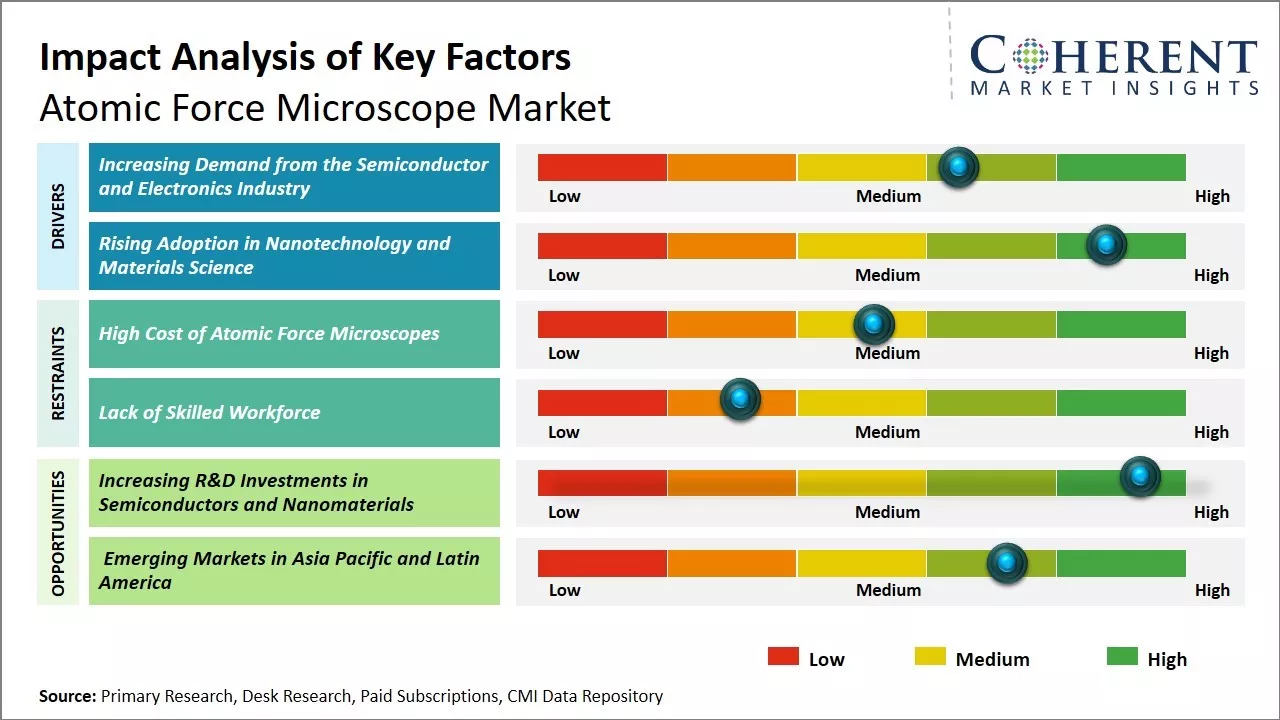The atomic force microscope Market is estimated to be valued at USD 632.6 Mn in 2025 and is expected to reach USD 890.7 Mn by 2032, growing at a compound annual growth rate (CAGR) of 5.0% from 2025 to 2032.

To learn more about this report, Request sample copy
The atomic force microscope market is expected to witness a positive growth trend over the forecast period. The growing semiconductor and electronics industry and increasing use of atomic force microscope in the healthcare sector are expected to drive the market. Further, rising focus on developing high-resolution microscopes for applications, such as pathogen detection, protein mapping, and cell biology, is expected to support the growth of the atomic force microscope market during the forecast period. However, high cost of atomic force microscopes is a major factor that can hamper the growth of the market during the analysis period.
Increasing Demand from the Semiconductor and Electronics Industry
The increasing demand from the semiconductor and electronics industry is expected to be a key driver bolstering the growth of the atomic force microscope market over the forecast period. Atomic force microscopes have emerged as a critical tool to gain nanoscale insights into various materials and surfaces used in the manufacturing of semiconductors and electronic components. These microscopes allow manufacturers to examine and analyze microscopic defects as well as measure the thickness and surface roughness of thin film materials at an unprecedented resolution.
Given the ever-increasing miniaturization and integration of electronic components, manufacturers are under constant pressure to improve production processes, detect flaws, and ensure quality control at the nanolevel. Atomic force microscopes provide precise characterization of next-gen materials such as graphene and 2D materials that are revolutionizing the semiconductor industry. Various players in the industry extensively employ AFM to evaluate new material properties, gain quality control over manufacturing, and enable the development of more powerful and energy-efficient electronic devices. Furthermore, continual advances in consumer electronics and proliferation of IoT devices have also augmented the demand for more powerful yet smaller and efficient chips. This has significantly propelled the usage of atomic force microscopy in R&D as well as production facilities of chipmakers and electronics manufacturers.
For instance, Hitachi High-Tech Corporation, a nano-technology solutions provider, offers AFM5300E that meets the needs of the semiconductor industry by enabling AFM measurement in vacuum environments, along with high-resolution electromagnetism measurements and observation of dopant distribution.
Joining thousands of companies around the world committed to making the Excellent Business Solutions.
View All Our Clients